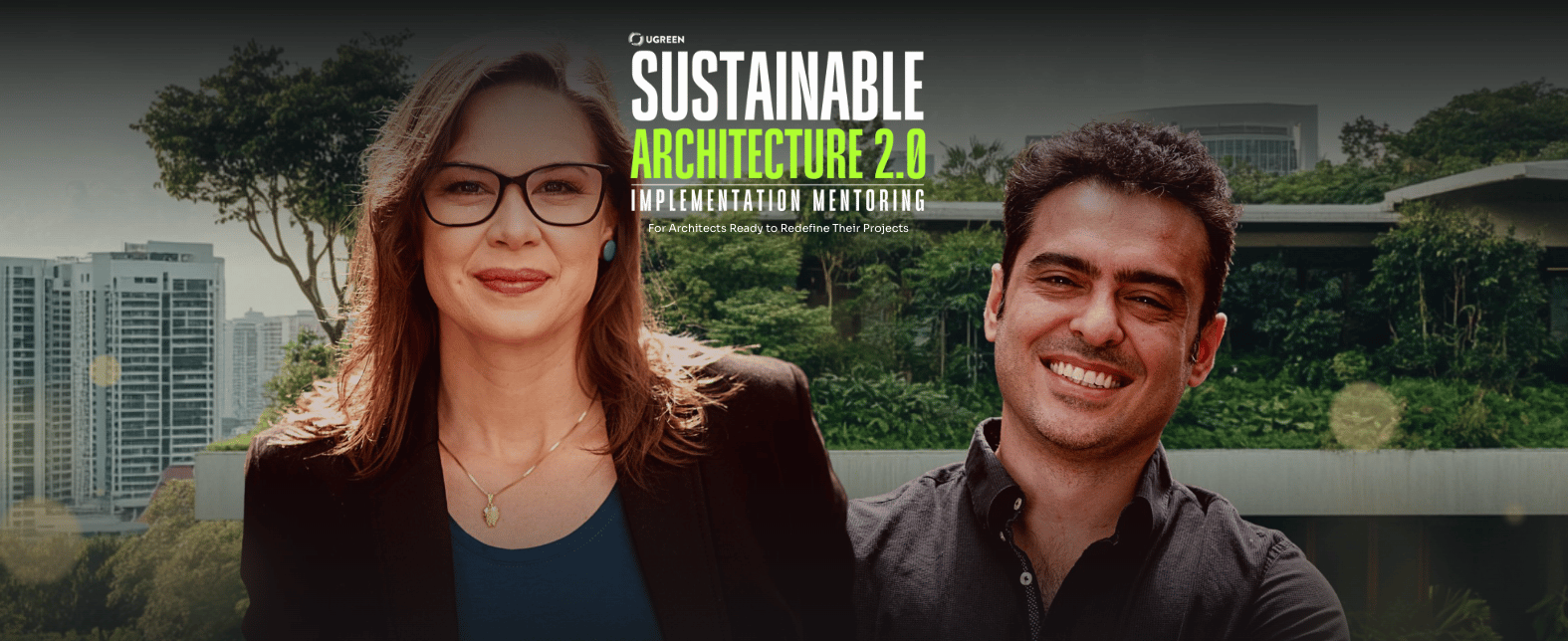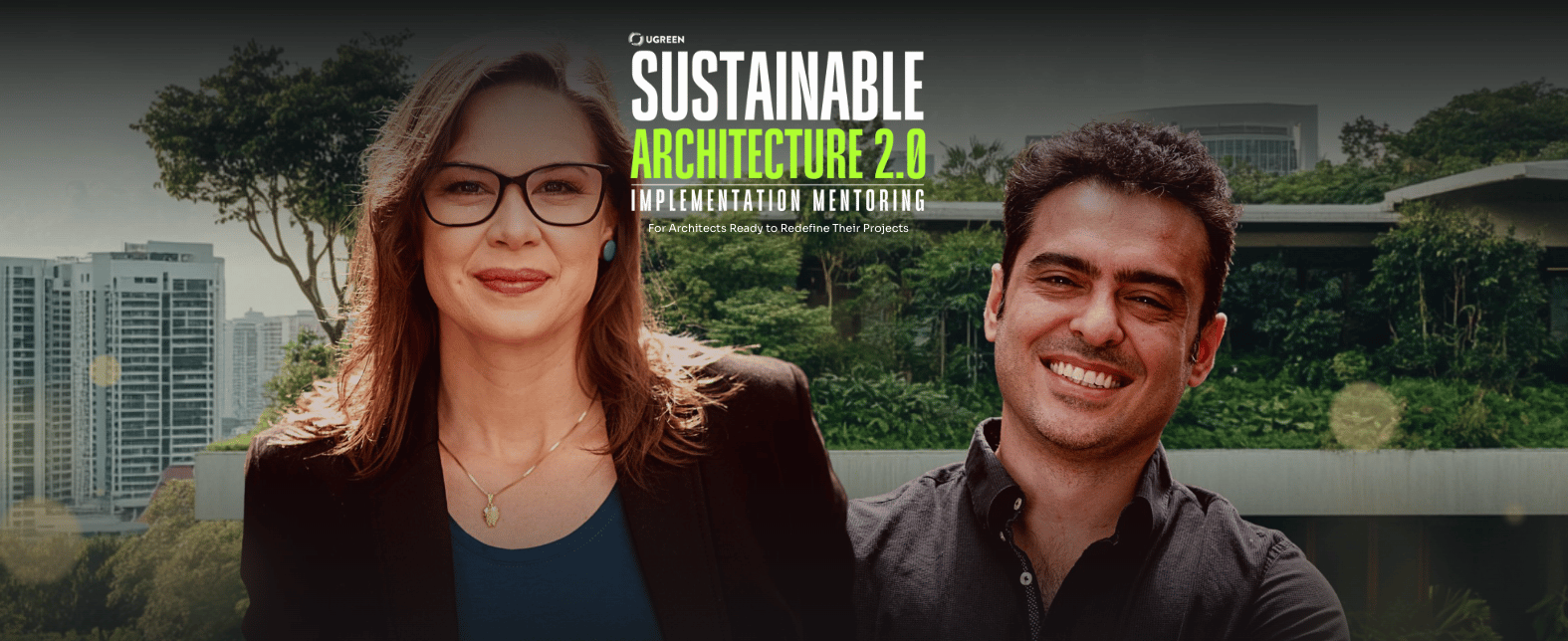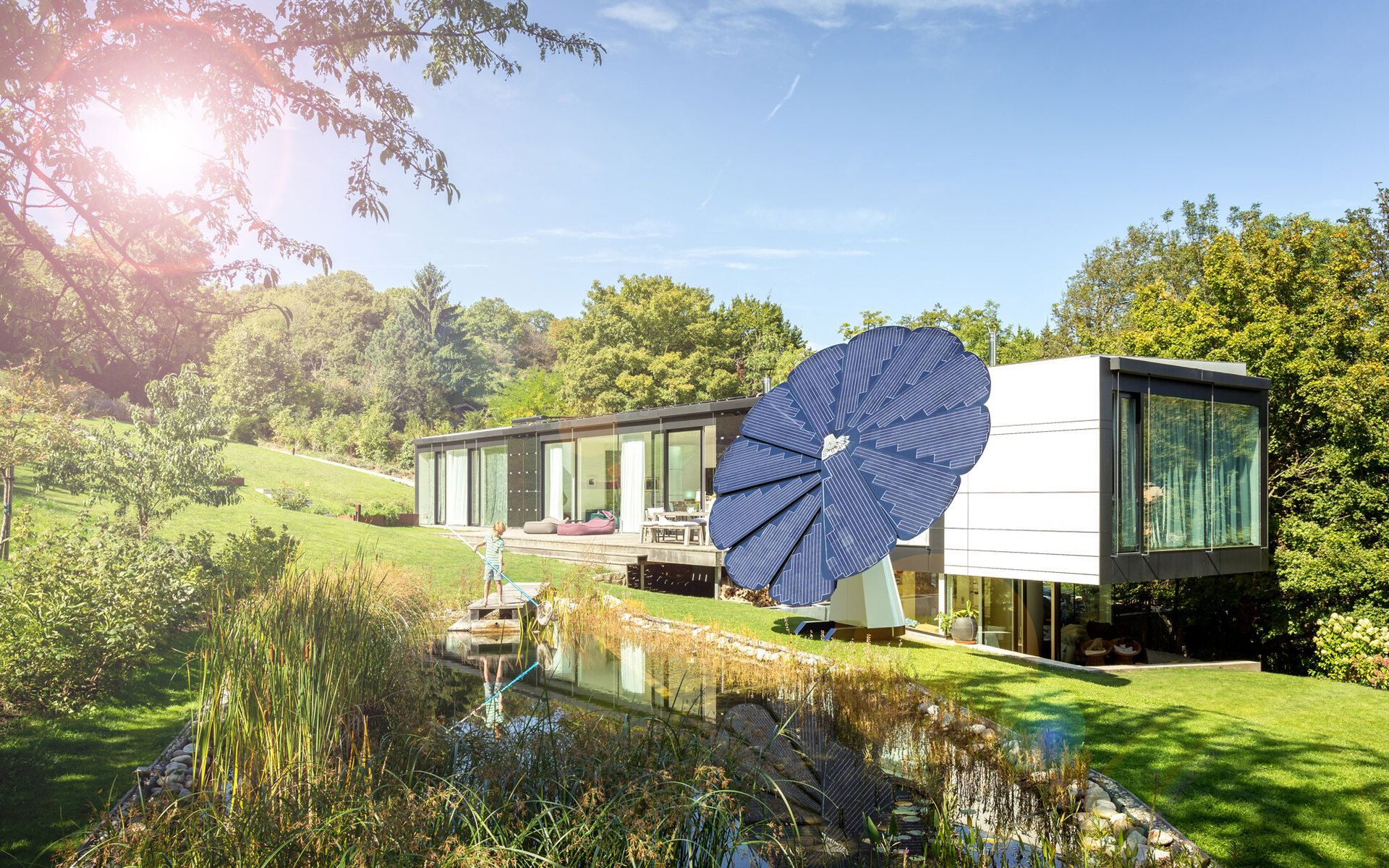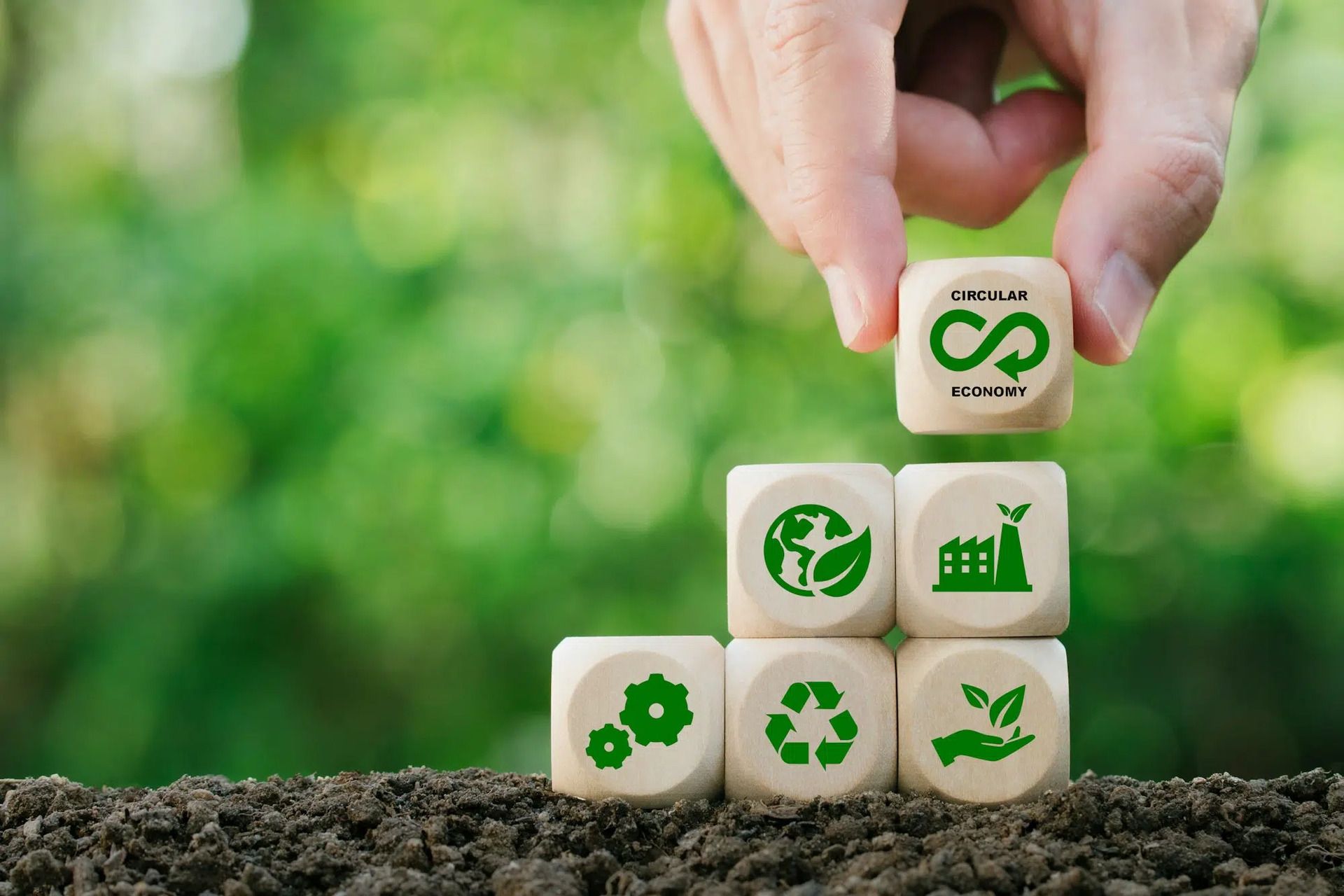- UGREEN
- Posts
- UGREEN Mentoring, SmartFlower, Circular Economy 2.0
UGREEN Mentoring, SmartFlower, Circular Economy 2.0
Your UGREEN News is live!

UGREEN Mentorship
Just a Few Days Left: Your Chance to Turn Projects into Real Impact Starts October 7!

Have you ever imagined designing spaces that not only “avoid harming the environment” but actually regenerate ecosystems, promote health, and create more resilient communities?
That’s exactly what the UGREEN Sustainable Architecture Mentorship 2.0 offers — and the first live session takes place next Tuesday, October 7.
What’s waiting for you?
You’ll have 4 lives sessions combining cutting-edge theory, international case studies, and practical tools to apply immediately in your projects. We’ll dive into topics such as:
Biophilia and Biomimicry applied to design
Architecture with real social impact
Building resilience and autonomy
Global certifications like LEED Zero and SITES
Inspiring cases such as Masdar City, The Line, and Mdellín
Why join?
Because the cities of the future are being designed today. And conscious, prepared, and up-to-date professionals will play a key in this transformation.
There’s still time!
Spots are limited, so click the link below and secure yours now!
News
SmartFlower: Solar Energy That Delivers Value Beyond the Electric Bill

Credits: SmartFlower
Not every solar system is the same. Most deliver energy efficiency, financial returns, and discretion — and that’s perfectly fine. But SmartFlower takes a different approach: combining cutting-edge technology, striking design, and a strategic communication function.
Instead of fixed panels on the roof, SmartFlower literally stands out in the environment!
How it works
The system is a fully autonomous unit: it opens in the morning, follows the sun’s path throughout the day, and closes at sunset. This movement is possible thanks to dual-axis solar tracking, which keeps the panels at the ideal angle to the sun at all times.
This tracking is the main factor behind an efficiency gain of up to 40% compared to fixed systems. But there are other important perfomance elements:
The system self-cleans when it closes, reducing losses by dirt buildup;
It features smart cooling, keeping panels cooler during operation, which further boosts productivity;
Installation takes just a few hours, and the unit can be disassembled and reinstalled elsewhere — something rare among solar systems.
With a nominal capacity of 2.5 kWp, SmartFlower generates between US$25,000 and US$30,000, meaning a cost per watt up to three times higher than conventional systems. The structure’s warranty is also limited to 5 years, which requires consideration.
In short: this is not a solution for those seeking maximum savings or quick payback. The proposal is different.
SmartFlower is ideal for those who see energy generation not only as utility, but also as a statement — whether aesthetic, institutional, or environmental.
Strategic applications
That’s precisely why companies, institutions, and high-end residential projects have adopted the system, seeking more than just functionality.
In Brazil, the school Colégio Farroupilha in Rio Grande do Sul uses SmartFlower as part of its environmental education strategy. The unit serves as a point of interest on campus and a teaching tool.
Abroad, the system has been deployed as a branding asset in universities, zoos, and companies wishing to make their commitment to sustainability visible.
Instead of hiding technology on the roof, SmartFlower turns it into a brand symbol.
Conclusion
SmartFlower is not for everyone — and that’s exactly the point.
It doesn’t compete with traditional systems on cost per watt, nor does it aim to be the most affordable option. Its value lies in the combination of technology, design, portability, and visual impact.
It works best in contexts where energy is also meant to communicate something: innovation, environmental awareness, institutional responsibility.
If your project demands that kind of presence, SmartFlower may be the differentiator you’ve been looking for!
Opinion
Circular Economy 2.0: A System That Redefines Value Creation

Credits: Krib.bg
Extract, produce, consume, discard: this logic has shaped the global economy for decades. But faced with resource scarcity, the climate crisis, and excessive waste, it is no longer sustainable.
Circular Economy 2.0 goes beyond recycling: it calls for a complete redesign of production systems, combining smart design, technology, reverse logistics, and new business models.
“Waste is not inevitable. It is a design flaw.”
Circular Economy 1.0 was a beginning. 2.0 is a new system
The first phase of the circular economy focused on waste management. It was reactive, often limited to recycling — important, but insufficient.
Circular Economy 2.0 represents a paradigm shift. It’s no longer about “managing the end” but also designing from the start. Products, buildings, and systems should be created with their next life already planned.
The new model operates on four systemic pillars:
Design for multiple cycles
Products and buildings must be conceived from the outset to last, be dismantled, and reconfigured.
The practice of Design for Disassembly (DfD) — promoted by universities like TU Delft and applied in modular buildings in Europe — ensures components can be separated and reused at low cost and with minimal environmental impact.
The Cradle to Cradle concept, developed by William McDonough and Michael Braungart, goes beyond durability: it envisions products made from materials that can return to nature or the industrial cycle without losing value. The textile Climatex, for instance, is biodegradable, toxin-free, and has even been used in airplane interiors.
Full material traceability
Without visibility, there can be no large-scale circularity.
Companies like Coca-Cola, Suez, and Rolls-Royce use sensors (IoT), blockchain, and Digital Product Passports to track every stage of material’s journey — from cradle to rebirth.
The European Commission, for example, will require industries such as fashion and electronics to adopt digital passports by 2030, containing information on composition, origin, and recyclability. This isn’t tech for the sake of hype — it’s infrastructure for the economy.
Reverse logistics as strategic infrastructure
Circular Economy 2.0 requires new logistics flows — not just for waste, but for value in motion.
Studies from the University of Lisbon show that companies with collaborative reverse supply chains managed to reduce logistics costs up to 30% and increase product return times by 50%
Beyond meeting environmental targets, they turned what was once a cost into an operational asset.
Business models based on access, not ownership
The “sell and forget” model is being replaced by Product-as-a-Service (PaaS). In this approach, customers pay for use, not ownership.
Companies like Samsung, LG, HP, and startups like Swapfiest (bikes on subscription) are betting on this model. It shifts the incentive: now, manufactures earn more if the product lasts longer.
In practice, it’s the opposite of planned obsolescence — it’s planned longevity as a competitive edge.
Real challenge remain
The European Union has advanced with the Circular Economy Action Plan (CEAP) and new regulations expected by 2026. But in much of the world, companies adopt circular practices mainly due to regulatory pressure, not strategy.
In Brazil, according to the National Confederation of Industry (CNI), 60% of companies practice some form of circular economy, but most limit themselves to legally required reverse logistics, without systemic vision.
Consumer behavior is also a barrier: studies by the University of Exeter show that while people claim to prefer circular products, their willingness to pay drops sharply as recycled content increases. “Reuses” is still too often perceived as “inferior”.
Circularity demands a narrative shift, not just a process shift.
Why this matters now
The European Environment Agency estimated that 62% of global GHG emissions come from the extraction and production of goods. In other words, decarbonizing energy is not enough — we must also decarbonize materials.
The circular economy could prevent 9.3 billion tons of CO2 by 2050, according to the Ellen MacArthur Foundation and Material Economics.
At the same time, the transition could create 4.8 million jobs in sectors like maintenance, repair, logistics, software, and now services — from Brazil to Norway, from India to Canada.
Reply